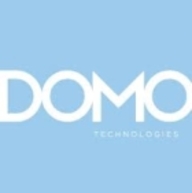

Domo and Oracle Analytics Cloud compete in the analytics and business intelligence category. Domo is favored for its rapid prototyping and user-friendly approach, while Oracle Analytics Cloud is preferred by larger enterprises due to its strong data visualization and integration capabilities.
Features: Domo offers rapid prototyping, user-friendliness, and extensive data connectors, enhancing data handling ease from multiple sources. It is valued for its ETL capabilities, allowing flexible data transformation. Oracle Analytics Cloud provides robust data visualization and consolidation, seamless integration with existing infrastructures, and advanced analytics and machine learning for deep insights.
Room for Improvement: Domo faces challenges with large data sets, and its visualization options are less advanced, impacting scalability and analytics depth. Integration capabilities and technical support lack agility. Oracle Analytics Cloud's complexity and cost are concerns, with users seeking improved machine learning features, more intuitive interfaces, and enhanced data handling flexibility.
Ease of Deployment and Customer Service: Domo supports on-premises and hybrid cloud deployment, with responsive yet sometimes overstretched support services post-deployment. Oracle Analytics Cloud offers cloud and hybrid deployment, with noted slower technical support and initial setup challenges, although customer service is generally knowledgeable.
Pricing and ROI: Domo is considered expensive but offers significant ROI and has a flexible pricing structure beneficial for negotiations, yet its cost may deter smaller companies. Oracle Analytics Cloud is also costly yet delivers strong ROI for enterprises willing to invest in its comprehensive capabilities, although its pricing can discourage cost-sensitive users.
| Product | Market Share (%) |
|---|---|
| Domo | 3.9% |
| Oracle Analytics Cloud | 2.0% |
| Other | 94.1% |


| Company Size | Count |
|---|---|
| Small Business | 16 |
| Midsize Enterprise | 11 |
| Large Enterprise | 20 |
| Company Size | Count |
|---|---|
| Small Business | 12 |
| Midsize Enterprise | 7 |
| Large Enterprise | 11 |
Domo is a cloud-based, mobile-first BI platform that helps companies drive more value from their data by helping organizations better integrate, interpret and use data to drive timely decision making and action across the business. The Domo platform enhances existing data warehouse and BI tools and allows users to build custom apps, automate data pipelines, and make data science accessible for anyone through automated insights that can be shared with internal or external stakeholders.
Find more information on The Business Cloud Here.
Oracle Analytics is a complete platform with ready-to-use services for a wide variety of workloads and data.
Oracle Analytics allows businesses to add AI and machine learning capabilities to any application—and as part of our integrated suite of cloud services to comply with data security and connected without disrupting business operations.
Offering valuable, actionable insights from all types of data—in the cloud, on-premises, or in a hybrid deployment—Oracle Analytics empowers business users, data engineers, and data scientists to access and process relevant data, evaluate predictions, and make quick, accurate decisions.
Oracle Analytics Cloud Features
Oracle Analytics Cloud has many valuable key features. Some of the most useful ones include:
Oracle Analytics Cloud Benefits
There are many benefits to implementing Oracle Analytics Cloud. Some of the biggest advantages the solution offers include:
Reviews from Real Users
Below are some reviews and helpful feedback written by PeerSpot users currently using the Oracle Analytics Cloud solution.
Fabricio Q., Data Analytics Manager, says, “The main functionality is great and everything is pretty standard and easy to use. It's great for consolidation and creating one source of truth. The initial setup is pretty straightforward.”
PeerSpot user, Eric B., Independent Consultant - Oracle BI Applications at Desjardins, mentions “It's really an enterprise solution. It has standard dashboarding functionality. It also has reporting capabilities for producing pixel-perfect reports, bursting large volumes of a document if you need to. It has interactive data discovery functionality, which you would use to explore your data, bring your own data, and merge it with maybe the data from an enterprise data warehouse to get new insights from the pre-existing data. It has machine learning embedded in the solution.”
Gaurav S., Vice President Credit Risk Management at a financial services firm, explains, “From a financial or bank perspective, this product is secure enough. The dashboards, analytics, visualizations, and different reports are valuable for business analytics. The AI/ML enablement is useful, as many reporting tools do not offer machine learning models as of now, without writing customized code.”
Another reviewer, Trinh P., Delivery Manager at Sift Ag, comments, "The specific capability I find important in Oracle Analytics Cloud is that it allows the basic user to easily drag and drop data. I also like that the solution allows the user to decide what to measure and what to see in the reports."
We monitor all BI (Business Intelligence) Tools reviews to prevent fraudulent reviews and keep review quality high. We do not post reviews by company employees or direct competitors. We validate each review for authenticity via cross-reference with LinkedIn, and personal follow-up with the reviewer when necessary.